the dots connecting





















It has been an extremely busy time for all of us at the IBAA with the posturing around the upcoming election, the ICBC report that was released in early December and how quickly the insurance industry was thrust into the spotlight.
I am sure you have all heard of the ICBC report that showed Alberta drivers pay exorbitant premiums for auto insurance as compared to other provinces in Canada. At first glance, I could see that this was erroneous the minute I looked at some of the examples that were included in this report. In response to the report, IBAA took action by releasing a statement that was picked up by some major news outlets. The methodology of the report had several key short falls:
1. The report did not take the lowest quote when reporting the rates it suggests drivers are paying. Instead, they dropped the lowest quote and took the “average” of the higher prices they obtained for the same level of coverage. This is not a realistic nor an accurate representation of consumer purchasing habits. Drivers do not select the average quote—they select the lowest price for the same level of coverage.
2. The report declined all discounts offered in Alberta, further driving their suggestion of premiums higher. Brokers work with their customers to identify the lowest rates possible. Private insurers in open, competitive markets can be aggressive in their pricing and typically use discounts to lower consumer premiums. For example, typical discounts for bundling home and property insurance are up to 20% from many private insurers. As public insurers do not have to compete for business, they do not offer these discounts.
3. The report quotes were generated through an online quoting tool and did not utilize the efforts of a licensed insurance broker.
Using a broker would typically yield additional, and more affordable, premium quotes.
I reviewed the four examples that ICBC included in its report. I treated them all as new business as if the client approached our brokerage for a new auto insurance quote. My findings were that, in every case, I was able to produce a quote that was significantly lower than the premiums published in the ICBC report.
After the ICBC report was released, it only took a few days before the NDP presented Bill 206, which proposed a 12-month rate freeze on auto premiums in the province. Again, IBAA issued a response within hours, which was picked up by media and our comments were published.
There is a lot of misinformation being presented to consumers in Alberta, and a lot of it is strictly strategic from a political standpoint and not based on facts. If any of the parties that will be involved in the upcoming election really wanted to find a long-term solution to help auto insurance rates in Alberta continue to stabilize, IBAA has offered to be a resource for them. Facts that we are presenting are either being ignored or being construed as “fake news,” but we will continue to make our voice (the voice of the broker) heard.
We are trying to differentiate ourselves from the insurers. Brokers are the champions of the consumer as we are the consumers chosen representatives to the insurers in Alberta. We see the impact that government policies, insurer rates and coverage decisions have on the citizens of Alberta. With this is mind, we are advocating for the needs of the insurance consumer to maintain a balance of both affordability and accessibility, so that they can continue to protect themselves and their loved ones from the impacts of the unforeseen.
I want to thank everyone who has offered support in this endeavour, so far and encourage all of you to get involved as well. Take the opportunity to chat with clients about the effects of a rate freeze. Contact your MLAs with your concerns. This affects all of us and the louder our voice, the more impact it will have.

“My findings were that, in every case, I was able to produce a quote that was significantly lower than the premiums published in the ICBC report.”
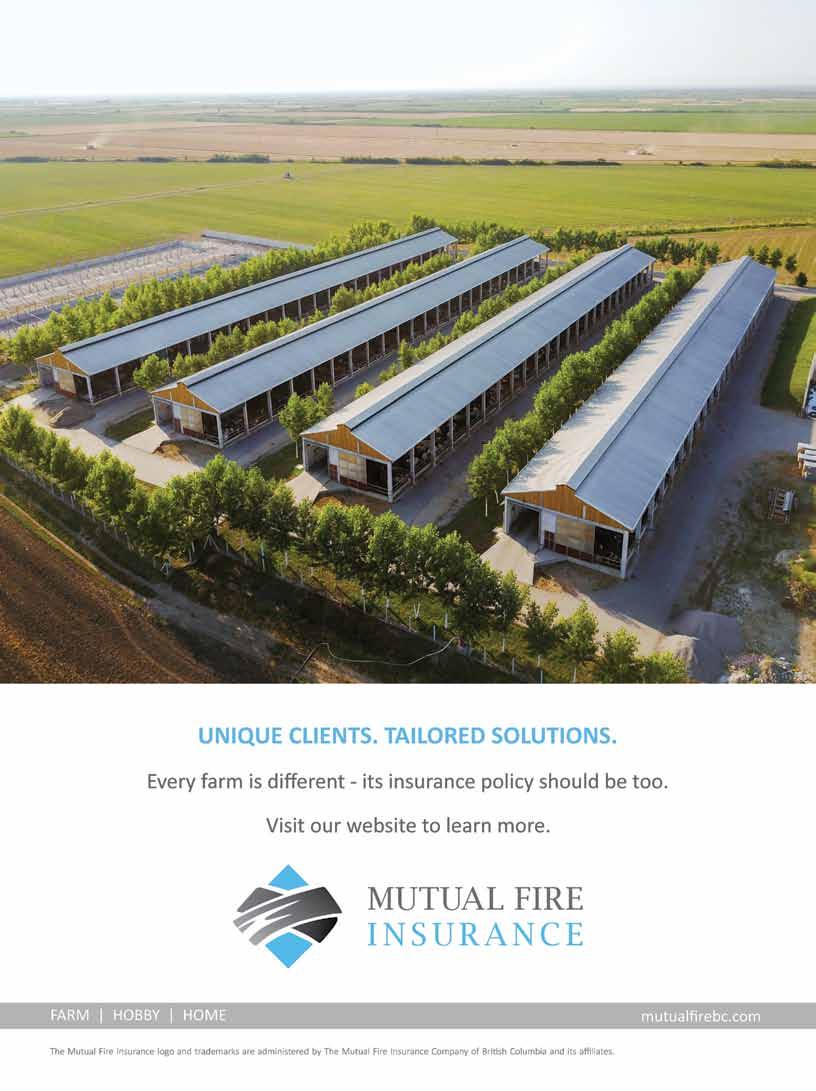
One of the three pillars on which the Insurance Brokers Association of Alberta (IBAA) stands is government advocacy, particularly at the provincial level. We are always engaged in some kind of advocacy work, whether it be with the office of the Superintendent of Insurance, the Alberta Insurance Council or the provincial government. In recent months, the need for government relations work has escalated due to the the provincial government’s decision to pause, or freeze, insurance rates until the end of 2023.
The situation continues to evolve but current indications are that the rate freeze will apply only to private passenger auto insurance rates. Commercial rates will continue to be adjusted based on the market. While the freeze is in place, we encourage brokers to remain agile with their own books of business in order to manage the impacts on their customers.

Our ongoing plan is to provide brokers with resources to cope with the current situation while also attempting to redirect the political energy behind the freeze toward more lasting and effective auto reform. The freeze has forced us to add the following concerns to our pre-election advocacy initiatives:
We understand the intent behind the freeze is to help address the inflationary pressures facing Albertans, but it will not result in lower premiums, and will create adverse effects on insurance coverage options.
Upon removal of the cap, a disproportionate rate hike will result in “sticker shock” among consumers.
BY G eor G e H od GS onWe have already started—and will continue—to present the following legislative and regulatory solutions to all current officials and prespective candidates we meet:
Allow for product flexibility for both insurers and consumers, including:
• More than one section B coverage option
• Integration and coordination of ongoing medical treatment under accident benefits in automobile policies
• The option to have a deductible for both fire and theft claims
Establish an accident benefit review board to regularly evaluate section B of the policy.
Include a mandatory review of the Insurance Act every five years and of the Insurance Act regulations every three years.
Implement higher penalties for a distracted driving first offence and increase penalties for second and third offences.
Improve and expand public information programs to stress the dangers of distracted driving and leaving keys in the ignition.
Preclude cash settlements where injuries remain unresolved in favour of a prescribed treatment plan developed and implemented by a dedicated team of medical experts.

Enlist medical expertise to develop a concise definition of what constitutes a catastrophic injury.
During all meetings and initiatives, our ongoing messaging remains consistent: We understand the need to address the rising cost pressures that Albertans are facing, including the cost of auto insurance premiums, but auto rate freezes and caps do not work. In fact, they negatively affect the very people they are intended to find relief for: those who require section C coverage and those who require payment plans.
While the current freeze must be a major focus of our advocacy team until policy makers adopt a better solution, it is also important to note that it is
not our only focus. We will continue to advocate in opposition to a rate freeze while also ensuring the other industry concerns that existed prior to the NDP’s proposed bill are addressed in all parties’ election platforms.
At the end of last year, we created and presented a white paper titled, “Alberta Insurance: Current Concerns and Solutions” to the three main political parties, namely the UCP, NDP and the Alberta Party.
The 2022 white paper focuses on the issues brokers and consumers face within commercial and auto insurance and presents some recommended solutions. For a full breakdown of our concerns, I encourage you to read the white paper found on the advocacy page at ibaa.ca.
When we present the white paper to government officials, we try to be as solution focused as possible to ensure that we are maintaining relationships while also advocating for a better future for our industry. Our suggested solutions contained within the white paper, are as follows:
The auto recommendations below are presented in addition to the reforms mentioned above.
Provide options to consumers by offering more than one limit for section B coverage allowing for the purchase of increased benefits.
Broaden the auto insurance product to offer consumers the option of choosing either a limited or unlimited right to sue.
Our recommendations within this category are intended to make commercial insurance more accessible and affordable.
Amend the Limitations Act to reduce the limitation for slip and fall injuries caused by ice and snow from 2 years to 60 days or amend the Occupiers Liability Act to add a section regarding “‘snow and ice.”
Create a more robust Mandatory Entry Level Training program to include mentoring and coaching programs for new commercial drivers.
Develop a database that would give insurers access to updated, reliable truck drivers’ license and insurance information.
Mandate employment history verification to help drivers secure their letters of experience, which insurers need to adequately assess risk.
IBAA will continue to lobby government and our insurers on behalf of Alberta brokers. We will also be launching a public facing page on our website to educate consumers on the rate freeze, how it impacts them, what they can do to improve the issues facing auto insurance in Alberta, and what to expect going forward.
As the champions of Alberta’s insurance consumers, we encourage all brokers to build relationships with local representatives and educate clients and community members. It is up to brokers to foster productive discussions and decision making regarding auto reform. Reach out to me at ghodgson@ibaa.ca if you are interested in adding your voice to any of our initiatives.
Ge O r G e hODGSON Chief Executive Officer IBAA GHodgson@ibaa.caafter 15 years of producing, directing, writing and acting in Almost Live!—a regional comedy show that was the lead in to Saturday Night Live on Seattle’s Nbc affiliate and was number one in its timeslot every single week for its last 10 years— bill Stainton finally felt confident enough to buy a new car and a new house. “What’s the most important rule in comedy?” asks Stainton, “Timing.” a month later, the show was cancelled, and Stainton was faced with the prospect of “What next?”
By Annette Hubick


Bill collected “dots” from some of the celebrities he worked with over his long show business career.


“Decide on the one thing that, if you make it a habit, the results will take care of themselves, and then having the discipline to follow through. early in his career, Seinfeld decided he would write jokes every day, no matter what. he bought a big wall calendar and each day that he would write jokes, he would put a red X on the day. his whole thing was you don’t break the chain. and to this day, he has never broken that chain. he still has a wall calendar. It’s a much nicer wall calendar on a much nicer wall, but he still writes jokes every day.”
Stainton began to think about how he could translate what he had learned in his career in a way that would help people in all sorts of industries. Like insurance brokers. Stainton will be appearing as the keynote speaker at IBAA’s annual convention on May 8. His presentation is titled, “Connect the Dots: Innovative Thinking for Insurance Brokers.”

As is often the case with local media celebrities (the show was based in Seattle), Stainton had often been asked to speak and host many events in the region, regaling audiences with behind-the-scenes stories and his encounters with famous entertainers over his career (see sidebar). Deciding that another TV production job would pale to his experience on Almost Live! and finding the prospect of more speaking engagements appealing, he wondered how he could expand his material and his audience. “It took me longer than I care to admit to realize, Wait a minute, I led an incredibly creative, innovative team for 15 years. I learned a lot about leadership on deadline. I learned a lot about creativity and innovation on deadline. I learned a lot about leading an innovative, smart team of people. I learned how to do these things even when you don’t feel like it
I’m not a creative type. While Stainton concedes that being creative and innovative is more naturally engrained in the entertainment industry, he contends that it doesn’t have to be that way. “Insurance and creativity are not mutually exclusive.” Stainton points to the way the industry adapted during the COVID-19 pandemic, introducing new ways to deal with clients, customers and suppliers. While the pandemic forced innovation, Stainton asserts that businesses can “force” themselves to continuously find new ways to improve. “You do work with a creative team. It’s a matter of intentionally incorporating creative processes into the brokerage’s operations.”
According to Stainton, people have a tendency to look at the great innovators like Jobs, Bezos and Zuckerberg and give themselves a pass on even trying to
be innovative. “I would say to those people, it’s really just a matter of remembering what innovation is. Innovation is just asking, what is a better way to do this? ” Stainton contends that the answers to that question often spring from the people, information, ideas and experiences we’ve collected (i.e., “dots”), especially if as we’re collecting them, we ask ourselves, how can I apply this to my situation? How can this relate to a problem I’m trying to solve right now? It can be as simple as reading an article—whether about your industry or not. “Read it and challenge your brain. I’m going to find something in this article that can help me with the situation I’m going through. And I promise you, if you do that, you’ll find something. The dots are all around you if you look for them. That’s all it is. You don’t have to be a technical wizard. You don’t have to have studied electrical engineering. You don’t have to be a computer programmer or a genius-level coder. You don’t even have to be a genius. It’s about looking at things just a little bit differently, asking different questions.”

It’s all we can do just to keep up with the day to day, and now you expect us to innovate as well? We don’t have any bandwidth left. “That’s a real challenge,” Stainton agrees. “The one about ‘I’m not an innovator type,’ that’s not real. That’s mindset. The whirlwind is real. We spend so much time on what’s urgent versus what’s important—those things that can really move us forward—like long-term planning and innovative thinking.”
JAY LENO“Jay once told me, ‘I meet like 200 people a week. you know me. I mean, I’m a nice guy. I try to treat everybody decently. but, you know, every now and then I’m late for something or I don’t hear them or I inadvertently can blow somebody up. It happens … For me, that’s just person 184. To them, that’s their Jay-Leno-is-a-jerk story—for the rest of their life. Not just for them, for their friends, their family, their colleagues.’ So that’s a real good lesson for anybody who’s in the public eye, which includes insurance brokers. The insurance business is a relationship ou’ve got to be really diligent that you’re always wearing the team colours, whether you’re actually wearing them ecause you never know, you never know who your person 184 might be.
Stainton challenges leaders to examine that whirlwind
Does this really have to be done? Why? What if I/we
If it does have to be done, does it have to be done by me/
Then, Stainton advises it’s a matter of scheduling time on a calendar for the important things. Schedule time to think, read, listen to a podcast, etc., as well as to brainstorm with your team. “If you don’t schedule it, the I’ll Have you been in the
continued on page 12

I’m having trouble getting buy in from my team. “I hear this all the time,” says Stainton. “Well, think of that phrase, ‘buy in.’ It implies that you’re trying to sell them on something, and our innate reptile brain’s first reaction is resistance. So, here’s what I would say: Instead of trying to get buy in from your team, try giving ownership.” Stainton contends that leaders should set the vision and then challenge the team with questions like: How can we get there? What can you bring to the table that’s going to help us get there? What am I missing? What aren’t I seeing? What are the other possibilities? “Your job is to give them the what and let them surprise you with the how … Because people, smart people, love figuring things out and love solving problems. Now you don’t have to get buy in. Now they have a sense of ownership, and if you have a sense of ownership in something, not only will you not resist it, you’ll actually advocate for it.”
Trying to engage a team in the process of generating creative solutions to the company’s “problems” can indeed be a challenge if people are rarely in the same physical location.
Stainton counters that many tools exist to facilitate creative exercises, whether in-person or virtual. “One of the keys is to see who else is already doing it, because everybody is going through this whole hybrid kind of thing, so you’re not in this alone. Other people have solved this. Other people are solving it,” he says, adding, “And look outside the world of insurance because otherwise that’s basically collecting the same dot over and over again. Ask yourself, What other businesses have solved problems similar to ours and how have they solved it? How can I adapt and adopt what they’re doing and apply it to my industry, to my brokerage? ” (A connect-the-dots exercise in itself.)
(Whose appearance on Stainton’s TV show was her second ever, coming on the heels of her debut on The Tonight Show with Johnny carson) “being confident in one’s abilities.” In her pre-interview, Stainton asked her whether she was interested in having her own show like other stand-up comedians had at the time (Drew carey, Jerry Seinfeld, Jeff Foxworthy). “Keep in mind, we were only the second time she was ever going to be on TV, and she just said, ‘Oh, yeah, yeah, yeah, it’s going to happen.’ I mean, she was just so sure of it. Not in an arrogant way, but just, It’s going to happen. It’s just a matter of figuring out how and when.”
regularly for the purpose of developing innovative plans and solutions can prove challenging, especially in the beginning. Stainton offers the following tips to be successful.
To truly establish a culture of innovation in your brokerage, you must understand that innovation isn’t a once-ayear strategic planning exercise, cautions Stainton. “What you do consistently is more important than what you do once in a while,” he says. Whether it’s your staff, a committee or even your family, bringing team members together
The first step is to create a sense of psychological safety for the team. People need to feel safe to share ideas and know that they are going to be heard. “It’s really important for a good, cohesive workplace and especially so for creativity and innovation.” It’s critical for leaders to model active, respectful listening.
Establish and follow meeting ground rules to ensure every has a chance to speak, uninterrupted, for a certain length of time.
T he leader speaks last, “otherwise the natural tendency is to offer ideas and opinions that parrot the leader and that’s not what you need.”
Give notice about what the topic will be. This is especially important for


capturing ideas from the more quiet, introverted team members. “They like to think about and weigh things before coming up with a solution, whereas extroverts tend to blurt out their ideas. There’s value to both approaches, but if you only reward the extrovert model, then you could be missing out on the winning idea,” warns Stainton. He suggests providing mechanisms for people to share their ideas anonymously prior to the meeting, e.g., a Google Doc, whiteboard, post-it notes.
Decide if the meeting will be about brainstorming or vetting/refining ideas. “The best ideas tend to be individually generated and then group improved,” says Stainton. For that to occur, egos must be checked at the door, he advises.
Be specific about what problem you’re trying to solve. For example:
• Instead of how can we make the customer experience better? Ask, how can we make the onboarding experience for a new customer 10% better?
• Say, I read an article about ABC company doing X; how can we incorporate that strategy into our business?”
• Ask, what are three things we could do to attract quality applicants for the X position?
• Challenge each team member to collect and share one “dot” they think the brokerage could consider adapting and adopting or at least, exploring.
Becoming an intentional dot collector and connector, let alone introducing “let’s innovate” team meetings may take a while to gain traction and produce results. “I’m not trying to say it’s easy. New habits have to be built because, just like anything else, it’s going to feel weird at first.
But it’s also a great opportunity because everybody feels weird about it. I mean, your first meeting could be to brainstorm ideas on how to run effective brainstorming meetings.” Hear more from Bill on becoming an innovative thinker at his keynote presentation, Monday, May 8, at the 2023 IBAA convention in beautiful Banff.
aNN e TT e h ub I c K operates Link PR Incorporated—a marketing and communications consulting firm—and has been the publisher/ editor of Alberta Broker since 1996. Annette@LinkPR.ca



When the national Speakers Association (nSA) was looking for the perfect opening keynoter for their new York City convention (the largest in the association’s history), they chose Bill Stainton. His standing ovation performance led one former nSA president to say, “I’ve never seen anyone combine so many elements of a great keynote as brilliantly as you did!” Bill’s programs are always customized, and always entertaining. that’s why he’s a CSP (certified speaking professional), the speaking profession’s highest earned international measure of excellence. fewer than 15% of nSA members worldwide have achieved the CSP designation, and Bill is proud to be among them. And in 2019, Bill was inducted into the Speaker Hall of fame (there are currently fewer than 185 speakers in the world in this exclusive club)!

What if everything you thought you knew about innovation was wrong? What if it was actually easier than you previously believed? How could that transform your business, your life, and your world? Get ready to re-imagine your innovative potential with this energetic and entertaining keynote program by 29-time emmy Award winner and Hall of fame speaker Bill Stainton. the insurance business faces unique challenges, and these challenges require innovative solutions. the broker who fails to innovate is the broker who will lose to the competition. this keynote dispels many of the misconceptions about innovation that keep some brokers from even trying and introduces some easy and effective ways to start innovating—immediately!
Many corporate insureds have both primary and excess policies to ensure appropriate monetary coverage in the event of a loss. When a loss occurs, the primary policy responds to the loss, with the excess policy only being required if the monetary limits of the primary policy are exhausted.
What happens when a primary insurance policy includes an optional extension period clause, but the excess insurance policy does not? And what if the excess policy does not expressly exclude such an extension? Can an insured extend both the primary and excess policies by paying the requisite premium under each policy, or can the excess insurer deny coverage due to the lack of an optional extension of coverage clause in the excess policy?
The Ontario Court of Appeal has recently rendered a helpful coverage decision in relation to an optional extension clause which was present in the primary but not in the excess policy in Cronos Group Inc. v Assicurazioni Generali S.p.A, 2022 ONCA 525.

Cronos Group Inc. (“Cronos”) is a company which manufactures and markets cannabis and related products. Cronos held a primary executive and corporate securities insurance policy with AXA XL (“primary policy”) and an excess directors’ and officers’ liability policy with Assicurazioni Generali S.P.A (“excess policy”) for the same policy period.
The primary policy included an optional extension period (“OEP”) clause that allowed Cronos to extend the coverage period beyond the expiry date within 30 days of its expiry. The premium for the OEP was twice the value of the policy’s basic premium.
The excess policy was subject to the same terms, conditions, limitations and exceptions as contained in the primary policy, with certain exceptions. The OEP was not an exception in the excess policy.
In January 2020, Cronos attempted to renew both the primary and excess
continued on page 16

policies. When Cronos delayed its disclosure of earnings, both insurers withdrew their quotes to renew the policies, which then expired. In February 2020, Cronos and AXA XL negotiated a 13-month extension of the primary policy, which extended coverage for claims premised on wrongful acts which occurred after the expiry of the original policy. Assicurazioni Generali S.P.A (“Assicurazioni”) did not extend the excess policy.
On March 11 and 12, 2020, two securities class action lawsuits were commenced in the United States naming Cronos and two of its officers as defendants. In March 2020, Cronos released its financial statements and notified Assicurazioni of the two lawsuits and its desire to exercise its OEP opinion under the excess policy and it forwarded the payment of the premium, which was twice the amount of the basic premium.

Assicurazioni rejected coverage for the two claims on the basis that the excess policy did not contain any clause that gave Cronos a right to an OEP. Cronos applied to the court for a declaration that under the excess policy it was entitled to purchase OEP coverage.
The applications judge granted Cronos’ request for a declaration. The court held that the excess policy followed form with the primary policy except as set out in specific provisions, which in this case did not exclude the OEP option. The judge further held that Cronos had paid the correct premium amount and had complied with all notice requirements.
Assicurazioni appealed several of the judge’s findings, including that (1) Cronos was entitled to purchase an OEP under the excess policy; and (2) the premium for the excess policy’s OEP was twice the amount of the basic premium.
In relation to whether Cronos was entitled to purchase an OEP under the
excess policy, Assicurazioni argued the following:
a. The excess policy did not expressly contain an OEP option;
b. Condition 2 of the excess policy excludes renewal agreements;
c. Condition 8 of the excess policy prevents Cronos from unilaterally extending coverage;
d. The excess policy does not contain a mechanism to calculate the premium for the OEP option; and
e. Its interpretation that the excess policy did not include an OEP option was consistent with the interpretation of an employee of the insurance broker at the time Cronos sought to exercise the option.


In relation to the above five arguments, the Court of Appeal held as follows:
1. The primary policy clearly states that if the policy is not renewed, the insured has the option of extending the coverage upon payment of the additional premium. The excess policy follows form with the primary policy, and condition 2 of the excess policy did not expressly exclude the OEP option. As such, the OEP option was included.
2. The extension of coverage afforded by the OEP did not constitute a renewal so the exclusion in relation to renewal agreements did not apply. The OEP was only applicable if the insurer did not renew the policy.
3. The extension of the policy period for 13 months did not affect the policy’s coverage amounts and, as such, was not offside conditions 2 or 8 of the excess policy.
4. While the excess policy did not contain an express payment for an OEP option, the judge gave effect to the policy in a way that was commercially reasonable. As the OEP was not excluded and the excess policy was subject to the same terms as the primary policy except premium and the limits of liability, the premium payment was a follow-form term.
5. The view of a non-party to the contract about the meaning of a provision that was made prior to their involvement had no relevance.
“Follow-form policy ”
The excess insurance incorporates the primary’s policy’s terms and conditions, subject to any express provisions in the excess policy to the contrary.
While the excess policy did not provide a mechanism to calculate the premium for the OEP option, the judge held that the excess policy’s premium would follow the 1:2 ratio set out in the primary policy.
Based on all of the above, the appeal was dismissed and the declaration that the OEP was effective under the excess policy was upheld such that Assicurazioni had to respond to any monetary excess owing after the primary policy was exhausted in relation to the two claims made during the extended policy period.
When an excess insurer intends to exclude extended coverage, such as an OEP option, the language contained in the policy must be explicit, as otherwise the excess policy will generally follow the form of the primary policy. This is consistent with the court’s general approach to construe exclusionary clauses narrowly, while clauses provided coverage are interpreted broadly. An insurer’s failure to specifically exclude an OEP option under an excess policy where a primary policy provides for an OEP option can lead to unexpected and unintended coverage consequences resulting in potential substantial monetary exposure for any loss falling within the extended policy period.

Your brokerage’s website is your “business card” to the world. Well-managed, it can be the cornerstone of your operational and marketing strategy. If not, it can and will be used to strengthen a claimant’s E&O case against you.
The Swiss Re Corporate Solutions claims team has seen an increasingly emerging issue stemming from this evolving part of your business. Seemingly harmless content on your website, emphasizing competitive advantages or certain expertise, can very quickly and unintentionally increase the brokerage’s standard of care resulting in a higher duty than normally required. That can be detrimental to your defence in a claim situation. To help mitigate the risk of an increased standard of care, we consulted risk management professionals with expertise in this area. Their suggestions are shown below. We hope you find these useful in creating and reviewing your brokerage website’s content
P Do clearly specify in which provinces the brokerage is licensed.
P
Clearly state the lines of coverage the brokerage writes (or does not write). For example: not all P& c brokerages handle benefits lines.
P
Do clearly state that misstatements or omissions of relevant information by the client can lead to price variation or even declination or rescission of coverage.
P
Do clearly state that information requested to provide a quote or work on coverage will not be shared with carriers or with any other entity without the applicant’s permission.
P
Be clear: requesting coverage does not guarantee coverage can be provided. coverage can begin only with specific statement by a licensed member of the brokerage staff.
P
Do clearly state by including a disclaimer that none of the information provided in the website is a guarantee that insurance will be provided or that the brokerage is obligated to procure insurance for the website visitor.
P
Do obtain express written consent from your carrier(s) or any other entity(s) if you use their name or logo on your website.
P
Do use a privacy statement on your website and be sure to encrypt any pages that collect personal identifying information, such as an online quote form.
O Don’t say the brokerage does things or provides services it does not do or provide.
O Don’t say that you can ensure that any claim will be fully covered.
O Don’t use terms such as “expert,” “specialists,” “best price,” “most comprehensive,” “fully covered” or “partner.”
O Avoid terms promising absolutes such as “immediate response time,” “aLL lines of insurance,” “all risk,” “24/7,” “all carriers,” “addressing aLL of your coverage needs,” “constantly reviewing.”
O
Don’t include client testimonials that show the clients’ names and identifying information without being sure the testimonial is specific to their experience thus avoiding an increase in your standard of care. be sure to have their express written permission, along with a procedure to remove their testimonial if they are no longer a customer.
O
Don’t launch a website without carefully reviewing the language, with an e&O risk management eye. Template brokerage websites or advertising firms simply may not have e&O on their radar. Involve your legal counsel in reviewing the language.
O
Don’t have a quote mechanism (form-fill or rater) and then fail to respond in a timely manner.
O
Don’t use open text boxes for customers to type messages to you unless adequately encrypted. you have no control over the information entered in the text box. If a breach occurs during transmission of that message, your brokerage may be held liable for the release of personal identifying information.
© 2021 Swiss Re. All rights reserved. Reprinted with permission. The material contained herein is for informational purposes only and is not intended as legal or other professional advice. Please procure the appropriate legal or other professional advice and services to address your individual needs and circumstances.















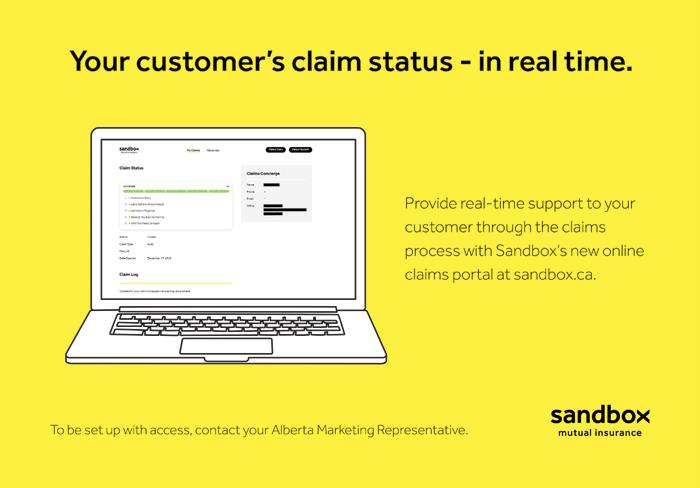
open your news app, and you’ll be inundated with headlines on foreboding topics. Looming recession. Political turmoil. Social unrest. Climate change. It seems there’s no end to the doom and gloom. In times like these, the path toward success isn’t just murky; it seems to have fallen away altogether. How can leaders navigate the challenges ahead—and come out on top—if we don’t know where our economy, our organizations, and even
we ourselves will be in the months ahead?
We should take our cues from a creature that has thrived at the top of its food chain for millennia, despite the fury and unpredictability of nature: the shark.

Contrary to their reputation as brutal, indiscriminate killers, sharks are actually smart, adaptable creatures with a deep respect for their environment—and their behaviors reveal the building blocks of lasting success.

One notable example: While you might assume sharks depend on their own brute power to survive in the ocean, their relationships with other fish are incredibly important. Sharks rely on remoras, or suckerfish, to eat parasites that would otherwise sicken and kill them. In return, the remoras receive a free ride—and the shark’s protection.

It’s not so different for humans. True success isn’t achieved through controlling others or being perceived as a threat. Not even hard work and
meticulous preparation are enough to guarantee that you’ll achieve your goals in today’s rapidly evolving and uncertain environment. Instead, it’s our network of relationships that brings value to our endeavors in work and in life, and that keeps us afloat and moving forward when the waters get rough.
Here are my “Sacred Six” principles that will help you adopt a few sharklike characteristics and become a valued—and valuable—impact player in your own ecosystem:





Some species of powerful sharks, including great whites and hammerheads, must continually swim forward. They need to keep water flowing through their gills to avoid drowning, which means that they can’t stop—and they certainly can’t swim backward. This aspect of shark anatomy offers an important lesson in seeking progress at all times, even when you’re tired or have made a mistake.
If you make a mistake once, it’s a lesson. But if you make the same mistake twice, it’s a choice. If you revert back to your old ways—or if you give up and stop swimming altogether—you’ll never improve your future. Instead, it’s crucial to move forward with purpose and direction. Fail forward. In most instances, you can overwhelm a mistake with hard work. Just as forward movement literally gives sharks life, the progress you make will infuse you with renewed motivation and passion.
Sharks keep their eyes on the water ahead of and above them, ready to react when prey appears. They don’t waste their time or energy focusing on what’s beneath them. Similarly, it’s important for us to keep our eyes—and our attitudes—pointed in a productive direction.
In most situations, your attitude is the only thing that can stop you. I’m not saying that you’ll never experience failure. Sometimes the fish will get away; sometimes another shark will chomp it before you can. Your job is to focus on what you can do, instead of on what you can’t, and to always be vigilant for opportunities.
Sharks can grow up to a foot a year, and their development isn’t purely physical; they are always paying attention and are always learning. In fact, many sharks don’t attack potential prey indiscriminately. They observe and investigate before striking to make sure it’s a creature they want to eat.
If your life isn’t growing and improving, something is wrong. Sometimes we receive valuable instruction from other people, but more often, it’s our responsibility to engage in self-reflection and self-analysis. Only by examining your choices, actions, and motivations can you begin to work on your strengths and weaknesses. Once you do identify a weakness that needs to be shored up or a gap in your skill set, be decisive and relentless in addressing it.
Sharks don’t typically perceive other sharks as threats, and they seldom attack one another. In other words, there’s room in the “ocean” for multiple leaders, mentors, and success stories—no need to feel threatened or intimidated by another’s accomplishments or position. Instead, strive to recognize the value that others bring to your team.
Actually, some species of sharks work with others when hunting in order to take down larger prey. They tap into the strengths of their fellow sharks to achieve a common goal—and so should we. Look around you for others in your field who are getting it done as well as—or better than!—you are. You can identify the “sharks” in your own life not just by their job titles or notoriety, but by looking at their character, work ethic and values. Pay special attention to sharks who influence others by proactively recognizing and coaching them.
A shark’s skeleton isn’t made of bone, but of flexible cartilage that enables it to change direction swiftly and efficiently. Some sharks are even able to swim in saltwater and freshwater. All of these things are instinctive for sharks, but for humans, changing and adapting to new situations can be extremely difficult.
A reluctance to change is what causes many people to stop moving forward. But remember: It’s not your past decisions that define you, but your next decision. Often,
the next “right” decision lies close to home; for instance, choosing to change your attitude or to accept constructive criticism. The good news is, the more flexible you become in the self-improvement arena, the easier it will be to pivot and persevere when external conditions become challenging.
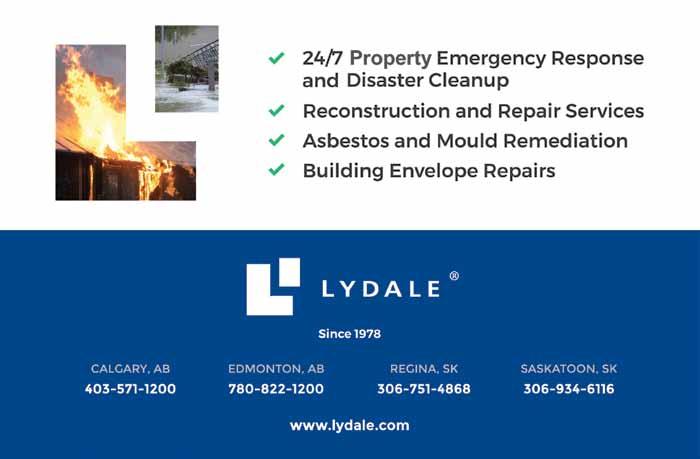
Suckerfish attach themselves to sharks. While they enjoy a “free” ride through the ocean, they eat scraps from the shark’s kills, as well as any parasites that might otherwise sicken and kill the shark. In other words, both the shark and the suckerfish get value from this relationship. There’s a lesson in here for us as well.
In the human world, suckerfish are people who want to go places but need help to get there. They need direction and guidance, and to have their questions answered with patience. The more energy you put into


helping them learn and grow, the more value they will bring to your team. And eventually, they will become sharks themselves. I truly believe that you aren’t successful unless you take others with you.
Sharks are such effective predators because evolution has given them everything they need to be successful— and the same is true for us. We just have to make the choice to develop and use our shark-like skills daily.
Swimming like a shark is a process that you must actively participate in throughout your life. It’s a mindset and a lifestyle. If something seems wrong in your life or you aren’t making progress toward your goals, check yourself against the “sacred six.” These principles are a blueprint for how to operate as a person of integrity and success, and, I promise, they will keep you swimming in the right direction.
there has been a lot of discussion recently about Alberta’s auto insurance market. With the provincial election just a few months away, political leaders are looking for opportunities to reduce costs for families and businesses as record levels of inflation and rising interest rates strain household finances. That’s a good thing.
Yet, in place of real reforms, we too often hear politicians resort to soundbites over sound policy. Such is the case with the announcement January 26 that the government is imposing a rate freeze. This policy may sound appealing but will bring little benefit to consumers – and may instead cause significant harm.
IBAA president Barry Haggis said it best, noting recently that, “rate caps simply don’t work. They do nothing to reduce costs within Alberta’s insurance system, and simply push problems down the road while making it difficult for many drivers to obtain the coverage they need.”
IBAA’s comments received considerable media attention, and
are an example of the weight broker voices carry with the public and policy makers. With a rate freeze now in effect, we will continue to need IBAA’s voice – and the voice of brokers across the province – to ensure consumers and elected officials fully understand the need for the government to get serious about undertaking meaningful reforms to the auto insurance system, as well as the negative consequences that will come with a rate freeze.
The government can and should do more to improve the affordability of auto insurance. But decisions must be based on facts and evidence, and the only way to truly improve affordability is to address the costs that put pressure on rates.
We know that, despite the recent rhetoric, auto insurance rates in Alberta are stable. Following reforms implemented in 2020, rates have risen just 2.8% over the past two years—far below inflation generally.
However, the insurance system is not immune to the inflationary pressures facing the economy. The cost of vehicle parts and repairs alone
has gone up over 13% since the start of the pandemic, not to mention the continued increases in legal fees and other costs within the insurance system.
That is why the insurance industry has continually engaged leaders of all political parties to put forward solutions that would deliver savings for drivers. Insurance Bureau of Canada (IBC) and its members have submitted a proposal—titled Enhancing Care, Expanding Choice —that would double treatment and care for those injured in collisions, while giving drivers more control over their policy and the ability to choose new coverages. If implemented, these reforms would save drivers an average of $200 annually. A further $65 in savings could be found if the government took action to modernize the province’s grid framework and eliminated the subsidies that good drivers pay to cap the rates for those with a history of accidents.
If political leaders want to provide immediate financial relief, IBC has strongly recommended removing the

4% insurance premium tax collected by the province. This tax is applied on every auto insurance policy and removing it—similar to action the Alberta government has taken on the fuel tax—would save drivers an average of $60 annually.
Together, these proposals could create $325 in savings. Tax relief today, while longer-term improvements are implemented.
Our voices speak louder when spoken together, and IBC is proud to partner with IBAA in representing our industry.
Vice President, Western & Pacific Insurance Bureau of Canada ASutherland@ibc.ca
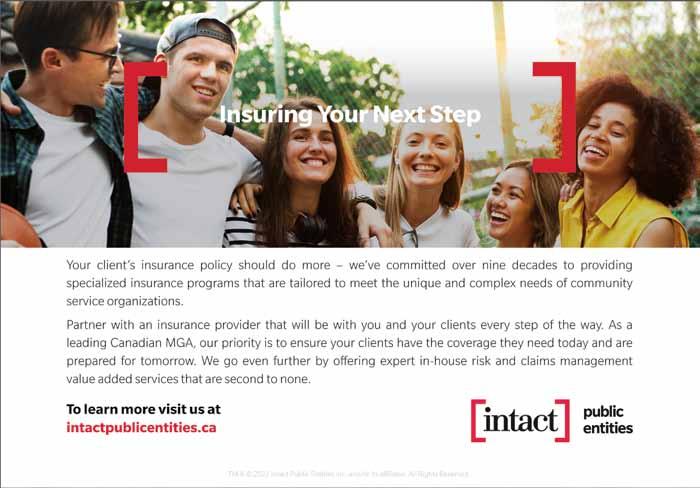
 a ar ON Su T her L a ND
a ar ON Su T her L a ND
It’s an election year in Alberta and you’ve got one job: Pay attention. Whatever the outcome of the election, changes are coming to Alberta’s insurance industry. It’s well worth your time to understand what this will mean for your business and your industry.
A proposed rate freeze on auto insurance is the key issue of concern. Election promises to freeze rates naturally look good to consumers hit by increasing costs of living. For everyone looking to stretch their dollar, such proposals seem to make sense.
However, the same affordability crisis facing consumers is hitting our industry.
The insurance industry is facing unprecedented economic challenges. Retaining and hiring staff requires increasingly competitive compensation. Overhead costs are way up. Vehicle repairs are skyrocketing. Premiums have to stretch further to allow businesses to keep the lights on.
This past year, Canada’s P&C insurers paid $1.07 out in claims for every $1 in premium collected. Healthy insurance companies shouldn’t pay more than 80 cents of each dollar in claims, leaving 20 cents to cover all the overhead required to stay afloat: administration, salaries, legal fees, taxes and more. Far from staying afloat, many insurers could soon be underwater.
A previous rate cap had subtle and far-reaching consequences. As auto claim costs climbed, insurance companies couldn’t raise rates to keep pace. This meant fewer insurance options for consumers as some companies chose to leave the auto market, or even exit the province, as they couldn’t price their product to match what they were paying out in costs. Customer care declined, as companies saw less incentive to work with consumers who held money-losing policies. Rates for good drivers went up to subsidize coverage for poor drivers. Client-broker relationships were strained.
But what about profits? Those of us in the business know that messaging around huge insurance company

profits is not accurate—profits average about 2%. Alberta’s market is highly competitive. Consumers can shop the market, which incentivizes insurers to keep rates competitive and margins tight.
With profits far from extravagant, a rate freeze will damage businesses and drive more providers out of province, or out of business. Less competition is bad news for the people we serve.
Studies show that the free market works—for consumers and for the companies that serve them. When governments interfere with that market, efficiency goes down for all.
Our industry is adept at working within the market to bring costs down without government

interference. Alberta’s new direct compensation for property damage (DCPD) framework continues to lead to adjustments. Brokers are working to find custom coverages to save customers money. The industry is focused on helping consumers trim costs.
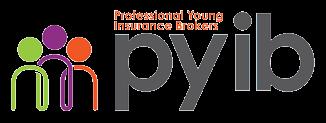
If it costs $20 to make a pair of shoes, it makes sense to sell them for $21 or more. If the government steps in to say you must sell those shoes for $15 to help consumers, you’ll
soon stop making shoes. It’s an old example that still holds true.
So, what does this mean for you as an Alberta insurance broker? It’s a reminder to get involved and pay attention. Every election affects you and your business. Make the effort to be informed, understand the issues, talk to your candidates, and connect with your colleagues and neighbours.
In our opinion, your role is clear. The best kind of voter is an informed one.
the first quarter of 2023 at the Ibaa office has been consumed almost entirely with convention prep, aGM prep, pre-election advocacy and company meetings.
This January we had a chance to sit down with various company leaders and executives to discuss industry issues and their plans for the coming year. Our board executives and CEO met with decision making staff from small, medium and large markets to discuss topics like affordability and accessibility, DCPD, potential solutions for personal auto, availability, flood mapping, better building and much more. The discussions were productive and, for the most part, encouraging. We will share as much as we can about the company meetings within our weekly email Brokerworks, our memberexclusive weekly email update from our CEO George Hodgson. If you are an IBAA member and aren’t receiving Brokerworks, reach out to our communication team at communication@ibaa.ca.
Aside from Brokerworks, our annual general meeting (AGM) is another great place to gain insight into how your membership dollars are being used to grow the provincial broker channel. This year’s AGM will take place on April 25, so keep an eye on your email or on ibaa.ca for more information.
Shortly after our AGM, we will be heading to Banff with close to 800 brokers and industry partners for the 2023 IBAA convention. We will be connecting with industry leaders, vendors and a selection of outstanding facilitators to discuss how innovation can be used to promote a new era of success for the provincial broker channel. Our 20s themed convention is guaranteed to be a “roaring” good time, so get your tickets while you can—registration closes April 7.
While you’re on the site registering for convention, please take a moment to visit your profile and download all of your continuing education credits (CEs). We will be moving to
a new member management system by the end of the summer and will only be able to save the last two years of your credits. We strongly encourage you to download and save your complete CE history for your personal records. If you are in a leadership role, please ensure everyone within your brokerage knows to login and save their CEs as well. If you need assistance accessing your CEs, feel free to reach out to us at communications@ibaa.ca or at education@ibaa.ca. As cumbersome as this process may seem, the change to a new member management system will provide you with much more comprehensive access to memberexclusive tools and resources. We look forward to showing you what the new system can do this fall.
We can’t wait to connect with as many of you as possible this spring during our convention, aGM and other events/courses. as always, if you have any questions about the Ibaa and what we’re up to, feel free to reach out—we’d love to hear from you.
It’s not always convenient for homeowners to make proactive upgrades, but they can take advantage of key windows of opportunity to build resilience into their homes. Our two new climate coverages are designed to do just that.

Learn more at wawanesa.com/climatecoverage

KEYNOTE SPEAKER | BILL STAINTON | 29 EMMY WINNER TIME
